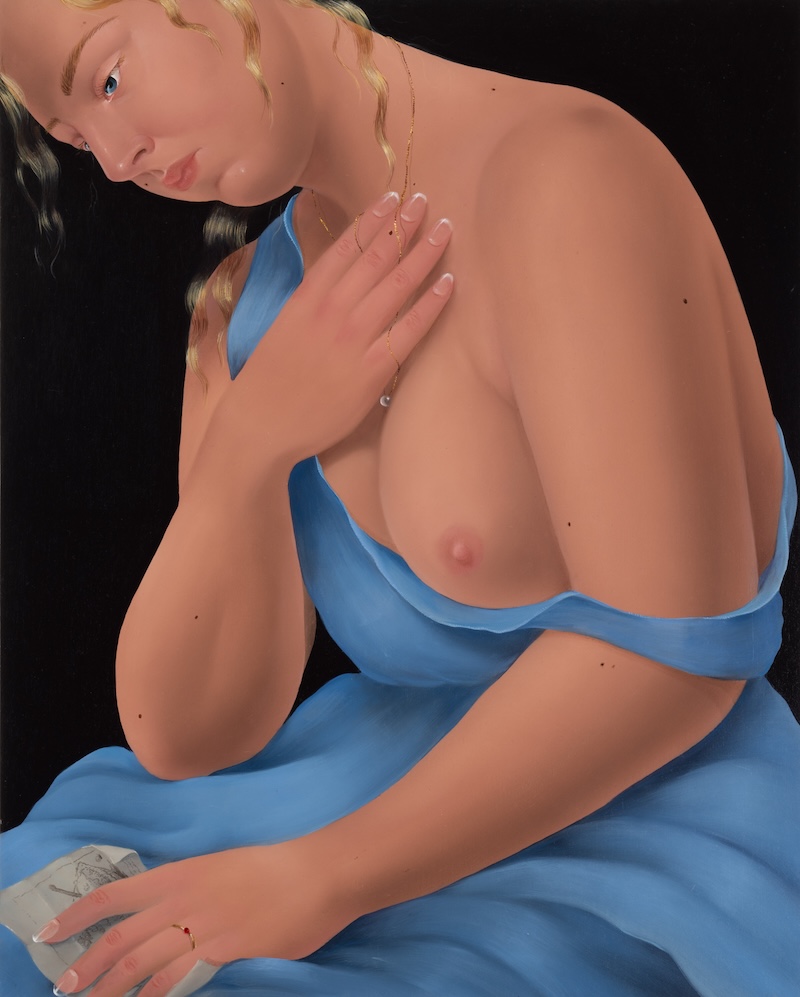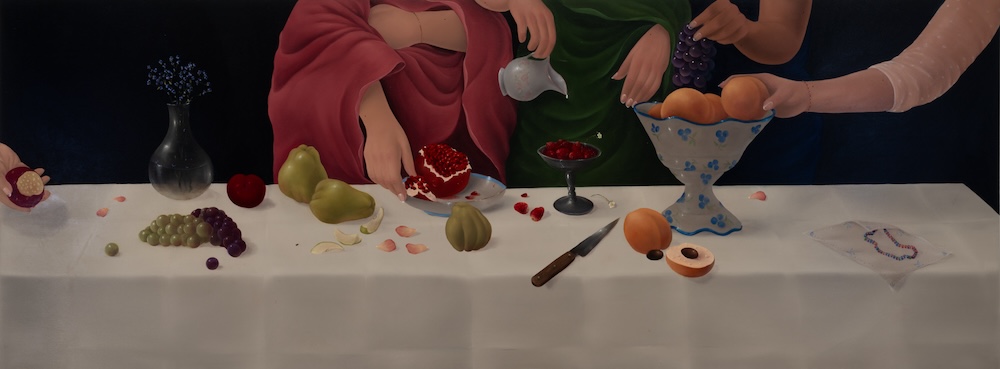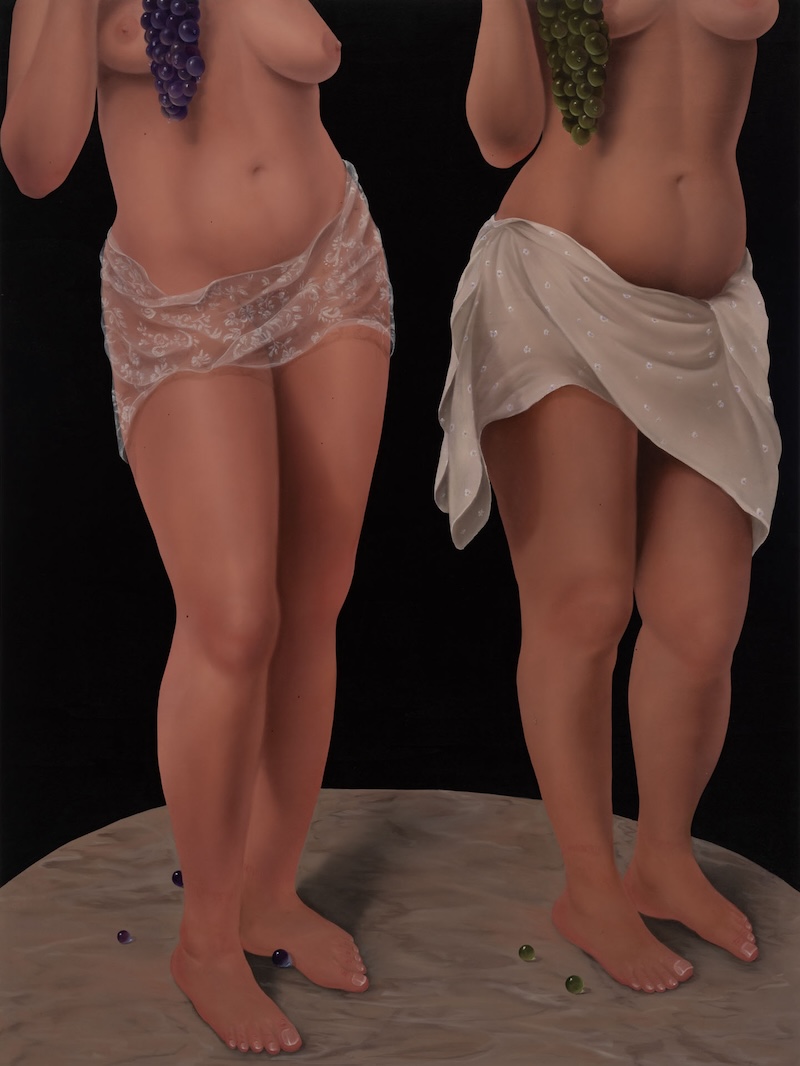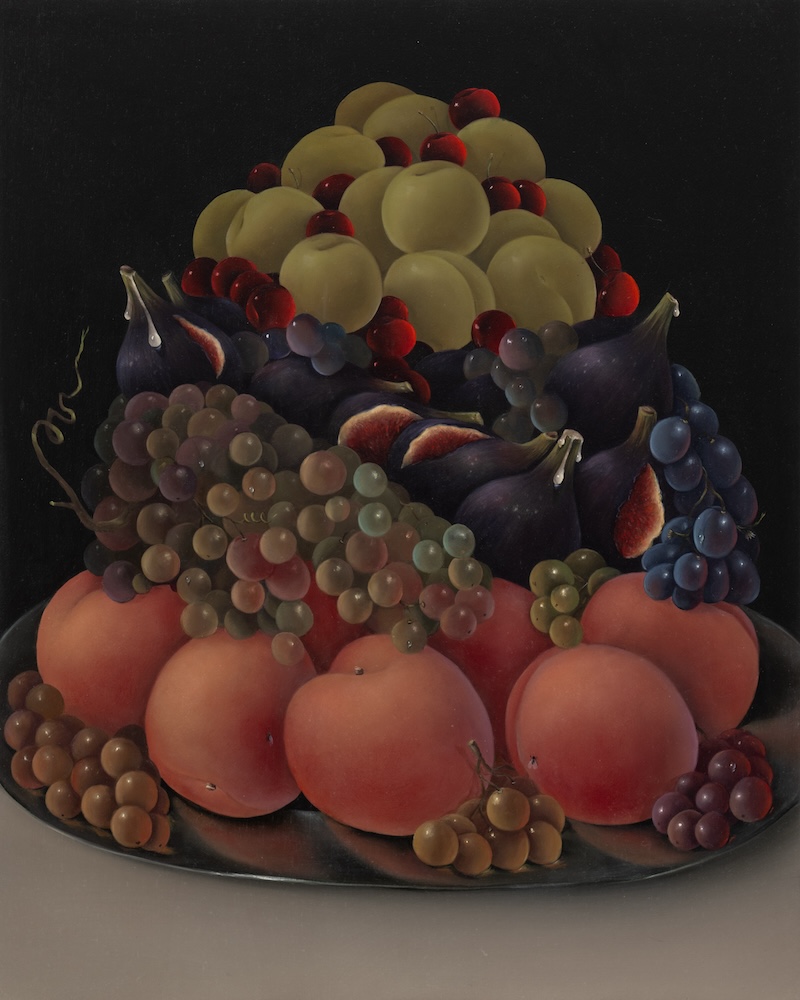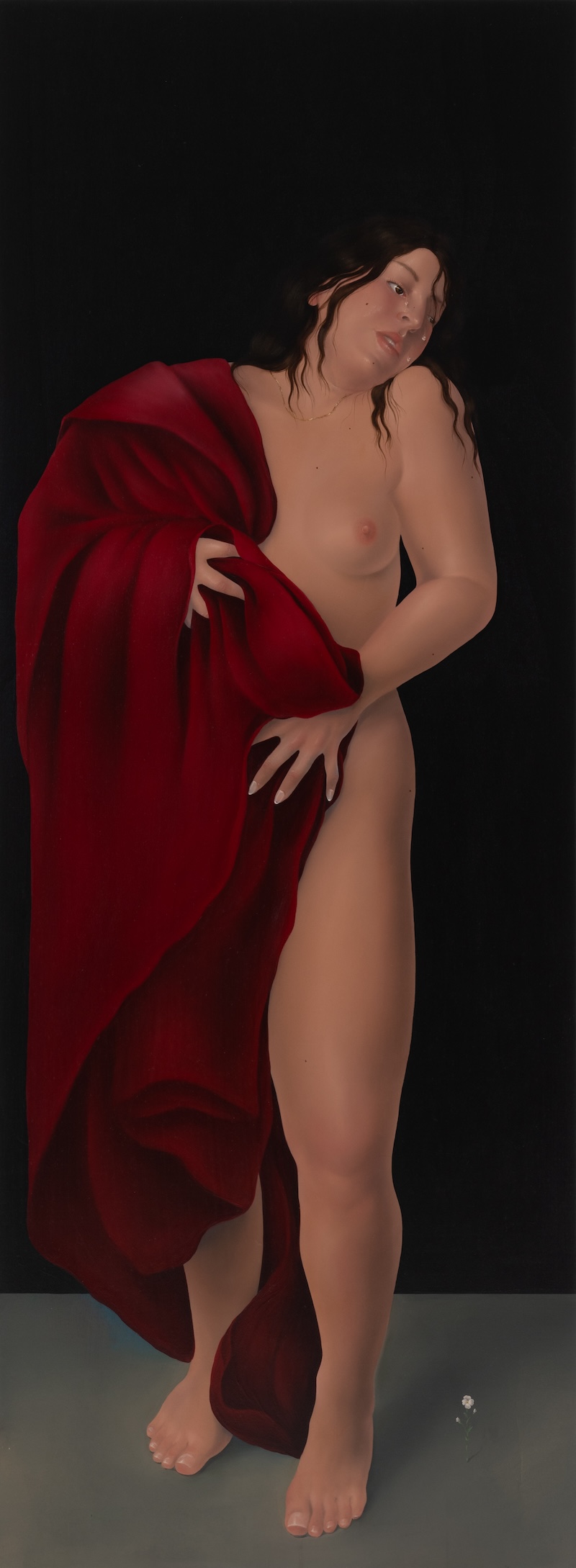Another Frieze week highlight: Table Manners is the second solo exhibition by Natalia González Martín at Hannah Barry Gallery. Bringing together two new bodies of work – 18 oil on panel paintings and a series of miniature egg tempera illuminations – the exhibition showcases González Martín’s evocative signature blend of religious iconography with contemporary storytelling. Drawn from her readings of modern works in medieval social history, including Renaissance scholar Rudolph Bell’s Holy Anorexia (1985) and historian Caroline Bynum’s Holy Feast and Holy Fast (1987), the exhibition calls to attention the fraught intimacy between women, food and bodily autonomy, not only in female conventual life but in women’s quest for liberation through the ages. Juxtaposing classicism with her own fantastical charm, Table Manners celebrates the grave beauty, power and strength of female sainthood in all its enchanting – at times brutal – symbolism, all the while exposing contested themes of sacrifice, community, illness, desire and virtue that continue to impact the lives of women today.
A homage to the legacy of icon paintings and portable altarpieces, González Martín’s works on panel present traditional religious formats from statuesque, baroque portraits of female Catholic saints to sumptuous still lifes glistening with gem-coloured fruits and leaky, perspiring vessels. In them we see González Martín’s fidelity to Counter-Reformation masters such as Francisco de Zurbarán and his dramatic use of tenebrism and sculptural evocation of form and movement – through to the humble majesty of Juan Sánchez Cotán’s austere, alluring still lifes. Despite this, each figure is firmly living in the present moment, with subtle imprints of González Martín’s personal relationships held side by side with hallmarks of female saintly martyrdom captured in unassuming verisimilitude: the white lily of Saint Catherine of Siena, a symbol of purity that belies the tragic denouement of her fatal self-starvation; the pliers and loose teeth of Saint Apollonia of Alexandria, who, according to church tradition, was so tortured; or the iconic Sicilian dessert, Minne di St Agatha, a playful but painful reminder of its namesake’s gruesome fate.
Staged with classical composition against dark, melodramatic backgrounds, González Martín’s paintings draw attention to the gravity and veneration placed on medieval Catholic women’s relationship – both symbolic and material – to food and its refusal in the name of piety. And so, find their complement in a series of smaller, framed works on paper made during her 2024 residency at Castello San Basilio, a 10th century fortified former monastery in Basilicata, bordering Calabria and Puglia in southern Italy. Drawing on her formal and applied research during this residency, these works allude to illustrated manuscripts used by medieval monks for private prayer and meditation – small, portable and lavishly decorated. Using the traditional painting technique of egg tempera, these ornate, delicate works feature idealised vignettes of the mutual care and shared meals of beguine communities of the Middle Ages, executed with brilliant colours and intricate borders adorned with gold leaf on the rare material of calfskin vellum, sourced from the sole remaining manufacturer of authentic vellum in Britain.
The practice of ‘holy anorexia’ – the rejection of food to bring oneself closer to God – can be seen as a rebellion against the patriarchal forces of the medieval era, enabling women to reject unwanted marriages or substitute religious activities for menial duties within the family, as much as it can a profound expression of proximity to and shared suffering with the lived embodiment of Christ. A historical phenomenon, yet one that nevertheless finds resonance, in the words of writer and researcher Asa Seresin, with ‘the boom of the wellness movement and its orthorexic prescriptions, [which in] the contemporary era has seen a resurrection of ‘holy’ self-deprivation’. Importantly, for González Martín the ambiguity of its purpose and the intensity of its practice are held in tension throughout the veiled narratives of Table Manners, which together move from desire to constraint, suffering to joy, virtue to protestation. González Martín’s exhibition conjures these associated, contradictory feelings and more, presenting an ensemble of characters that subtly showcase and subvert their own religious symbolism in favour of a fantastical, contemporary realism.




